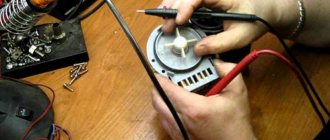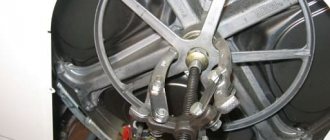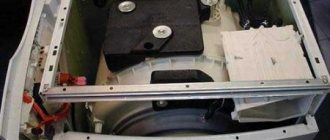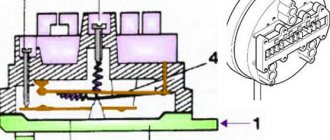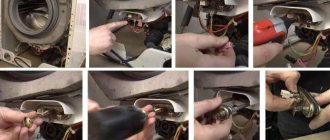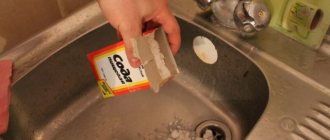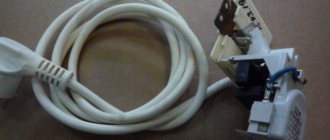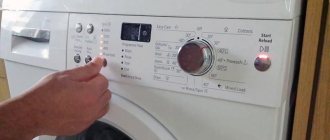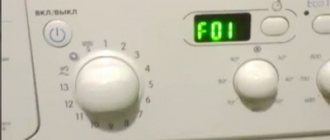All household appliances fail sooner or later, but if to repair an electric lamp it is enough to replace the light bulb, then to restore the functionality of a complex device you will need
have a sufficient amount of free time and the minimum required level of knowledge. A washing machine is just such a product, so self-repair is fraught with many difficulties, especially when it is necessary to disassemble this device for repair.
Often the washing machine pump fails, and if this part cannot be restored, then it must be replaced. To perform this operation, you need to disassemble the washing machine and remove the faulty drainage device.
Washing machine drain mechanism
This operation must be performed strictly in a certain sequence, so before you begin removing this part, you need to know exactly where the drain mechanism is located and how it works correctly.
Drain pump: operating principle
After the end of the washing or rinsing cycle, the electronic control unit sends a signal to the solenoid valve to turn on the drain mechanism. Forced removal of liquid is necessary to reduce washing time, so the washing machine is equipped with a powerful pump that allows you to pump out the entire volume of liquid inside the machine’s tank within a short time.
To prevent small particles from entering the interior, the drain mechanism has a washing machine drain pump filter.
Washing machine drain filter
Thanks to reliable protection against solid objects getting on the impeller, it is possible to achieve a long service life of the pump, but if for some reason such a “fuse” does not work, then even a small plastic button caught in the internal cavity can cause failure of this part.
If the drain of the machine stops working, then it is necessary to check the pump for possible damage. How to check and replace, if necessary, the drain pump on a washing machine will be discussed below.
Methods for removing the drain pump
The pump removal method differs for different models. The main methods and which brands are most often found:
- Disassembling the machine through the front panel (LG, Siemens, Bosch, machines with aquastop)
- Through the bottom, placing the machine on its side (Indesit, Ariston, Samsung, Ardo)
- Through the back cover (Candy, Electrolux, Zanussi)
- For vertical speakers: through the side cover
Through the front panel (LG, Siemens, Bosch, cars with aquastop)
Step-by-step procedure for dismantling the pump:
- Remove the detergent and softener container.
- Remove the top cover. It is usually mounted on the back wall.
- Remove the control module.
Carry out dismantling carefully. Advice! Before removing the control module, it is recommended to photograph its location. - Removing the panel above the hatch.
- Remove the front panel.
- Carefully disconnect the wires from the blocker and remove the bolts.
- Removing voltage supply parts from the pump.
- Dismantling the hoses going to the pump.
Now you can repair the washing machine pump yourself. To do this, blockages are removed or the part is completely replaced.
Through the bottom (Indesit, Ariston, Samsung)
To dismantle the pump through the bottom:
- Unplug the machine, disconnect the hoses, lay it on its side
- Remove the front strip on the front panel, behind which the filter cover is hidden
- Unscrew the two mounting bolts that hold the pump
- Turn the pump counterclockwise and remove it from the grooves
- Unscrew the clamps holding the inlet and outlet hoses and remove the terminals
- Unscrew the 4 bolts connecting the pump and filter
Through the back cover (Candy, Electrolux, Zanussi, Ardo)
The sequence for dismantling the pump through the rear panel:
- Disconnect the machine from the network, unscrew the inlet hose
- Unscrew the screws holding the cover around the perimeter
- Pull the back cover towards you and remove it
- Disconnect power to the pump by removing the terminals
- Tilt the machine, unscrew the 2 bolts holding the pump at the bottom
- Using pliers, remove the clamps that hold the pipes on the pump
- Remove the drain hose, pull out the pump
Through the side cover (vertical washing machines)
In models with vertical loading, you can reach the pump through the side wall in the following sequence:
- Disconnect the device from all communications, provide access to equipment
- Remove the inlet hose
- Unscrew the screws on the rear wall along the edge (in some models the side panel is also held in place by fastenings at the front) of the model and remove the panel by pulling it towards you
- Remove terminals
- Unscrew the screws holding the pump
Signs of a faulty washing machine pump
In order not to confuse other types of washing machine breakdowns with a pump malfunction, you need to know the main signs by which you can judge that the pump has failed or its life is coming to an end. Most often, this malfunction manifests itself as follows:
- The washing machine makes a lot of noise when draining dirty water.
- The device operates normally, but the liquid is pumped out too slowly.
- The pump hums, but no water comes out at all.
- The “drain” mode is turned on, but while the system is operating, the water drainage process is automatically turned off.
If at least one sign of malfunction is observed, it must be checked. If the pump is clogged, timely cleaning will allow it to fully restore its functionality.
this detail. In order to make a diagnosis, you need to know where the pump is located on the washing machine.
Where is the pump located?
Locating the drain mechanism at the front wall of the machine
The drain mechanism can be located in various places of the household appliance. Its location depends on what brand of washing machine was purchased. The pump can be installed:
- In the back of the car (Electrolux and Zanussi)
- Just behind the front cover (AEG, Bosch and Siemens)
- At the bottom of the machine (Whirpool, Samsung, Ariston, Beko, LG)
Having established the exact location of the drain unit, it is necessary to remove the part for inspection.
How to remove the pump?
To remove the pump you will need to prepare the following tools:
- Slotted and Phillips screwdriver.
- Set of wrenches.
- Water container.
Important! Before disassembling the body of the washing machine, be sure to disconnect the device from the electrical network and turn on the water supply tap.
If you need to remove the device, which is located at the back of the household appliance, then the sequence of actions will be as follows:
- At the bottom of the wall there is a special door, opening which you can gain access to the filter element of the drainage device.
The door behind which the filter is located - An emergency liquid drain hose is located next to the filter element. Even if the operation of the washing machine was completed as usual, it will still be necessary to remove residual liquid, which is always present in the cavity of the pump and filter element.
Draining - When the water is drained into the prepared container, the drain filter cover is removed. To do this, you need to turn it counterclockwise.
- Then, turning the pump also counterclockwise, it is removed from the bottom cover. If the model is not equipped with a bottom cover, then simply tilt the washing machine and remove the drainage device. When the cover is installed, it must first be removed by unscrewing the screws holding it in place.
- The pipes and electrical terminals are separated from the body.
Removing the pipes
When performing this operation, care should be taken not to damage the parts connected to the drain device. To easily and safely disconnect the pipes, first loosen the clamps.
After removing the drain mechanism, you can begin to inspect and clean it. In washing machines with a pump located in the front, the sequence of operation is the same, but the drain mechanism, in this case, will be “hidden” under the powder tray.
Replacing the pump in the drain system of a washing machine from lg
We will provide you with the procedure for the following steps when disassembling a washing assistant from LG, but if you decided not to waste time and money on specialists, but wanted to make the replacement yourself.
In order to replace the drain pump in an LG machine, you first need to open the back panel.
- First, you need to pour out all the water from the machine’s tank and turn off the water supply;
- For your own convenience, it would be best to place the washing machine on its side, after laying unnecessary floor rags on the floor so as not to stain the structure;
- In new modern models, in order to open the back panel, you need to remove it with one click, which cannot be said about older machines in which the panel needs to be unscrewed;
- Disconnect the pump from the housing. The bolts that hold it in place are located on the outside, near the drain valve;
- Push and pull the pump towards you;
- Disconnect all wires going to the pump;
- Drain the water pump (if there is one), and then loosen the clamps holding the drain hose;
- We remove the pipes and hoses and rid them of water;
- If the snail is in good condition, then there is no point in replacing it. We install the old volute into the new pump (in order to remove the volute from the old pump, you need to unscrew the bolts that hold this volute in place);
- We screw the old reliable snail to the new pump and assemble everything in the reverse order. First you need to screw the pump to the volute, and then connect the pipes, hoses and wires.
READ MORE: What can’t be washed in the dishwasher, and what can be done and why this is so
As you can already see, the repair is quite simple and does not require much effort, however, in case of serious problems, we advise you to contact a service center.
Do-it-yourself pump repair
If the drain pump in the washing machine fails due to burnout of the electrical winding, then in this case it is necessary to replace the part. In other cases, it is often possible to restore the device to full functionality, for which you should first clean the impeller and filter. To clean the impeller, you will need to disassemble the device housing. The two halves of the working cavity of this part are usually held together with 3 screws, so it is enough to unscrew the hardware holding the pump parts together to gain access to the impeller.
Disassembling the drainage device
The cause of deterioration in the performance of the drain mechanism, as well as complete jamming of the working shaft, may be threads, hair or long wool. It is necessary to carefully inspect the impeller and shaft and, if such contamination is detected, clean them using a thin screwdriver. The inside of the cochlea also needs to be wiped to remove soap deposits on its walls.
When the parts are cleaned, wash the two halves in water without immersing the engine. Then you need to assemble the housing, connect the pipes and electrical terminals to it and install it in its original place.
When the process of installing the cleaned pump is completed, turn the machine into rinsing mode and check the operation of the drain mechanism. If the device operates in normal mode, then no more
no measures are required; if it was not possible to repair the pump in this way, then it is necessary to replace the electric drain pump in the washing machine.
Causes of breakdowns, their symptoms and solutions
Among the most common causes of problems with draining waste fluid, experts cite clogged pipes that lead water into the sewer system, a power failure, mechanical damage, and, finally, insufficient engine power.
The most common cause of pump problems is a clog. In this case, it is necessary to clean the internal space of the pump, the volute and the drain filter.
First of all, turn off the power to the device. There is a small round hatch at the bottom of the hull; Place a suitable container under it to drain the remaining water in the machine. Expect the volume of liquid to be at least 1 liter. After opening the hatch, remove the filter and clean it. Then return the grille to its original place, close the hatch and start the washing machine again.
Is the drain still not working? The reasons lie in damage to the pump. Problems may be electrical related: one of the wires may be damaged, resulting in a disruption in the voltage supply to the pump. In this case, you should remove the back wall of the device and visually check the condition of each contact, as well as the reliability of their connection. To find broken wires, use a tester or other device.
If the operation of the pump is accompanied by vibration, the cause of the malfunction is related to problems in the operation of the rotating part of the pump - it is called the impeller. You will have to disassemble the machine and replace the damaged pump element.
Is the water draining accompanied by a hum? Most likely, the impeller is jammed. The most common cause of such problems is stuck objects. In order to remove debris, you first need to remove the drain filter from the machine body, and then the snail.
If you are sure that there is no blockage in the impeller, but the water still leaves the drum very slowly, the cause of the problem lies in a lack of power.
It is worth talking about replacing the pump if the following “symptoms” appear during operation of the washing equipment:
- the device stopped without finishing the specified program;
- the equipment works, but the water does not drain;
- The drainage of water is constantly accompanied by strange sounds - hum, noise, etc.
READ MORE: Top 16 best electric trimmer models of 2020, ranked by Zuzako
How to replace the pump
Changing the pump is not at all difficult; just carry out the steps described above to remove the device, then install a new part in its place. Installation of a new device is carried out in compliance with
precautions. All pipes and electrical terminals must be installed in the same way as they were located on the faulty device.
New replacement device
To replace it, it is best to use the original pump for a specific model, but if it is not possible to purchase a branded part, then install a universal model.
Such a pump is suitable for many washing machines, but is sold without a volute, so if this part is damaged, then in the absence of a new model of a branded pump, it is necessary to find a faulty washing machine, which will be used as a donor to remove a known-good drainage device.
When the new drain mechanism is installed in place and connected to electricity and pipes, a test run of the machine is performed in the “rinse” mode. If no disturbances in the drainage of liquid are observed, the household appliance can be used as usual.
Motor pump disassembly, inspection, replacement, repair
You can disassemble any motor pump yourself to make minor repairs or for technical inspection purposes. As for the engine, it is better to entrust its work to a specialist, and if the purchased motor pump does not have an expired warranty period, then even more so, no serious repairs should be carried out. You will need to disassemble the unit in several cases. Such as: checking or replacing the spark plug, checking, cleaning or replacing the filter, cleaning the drain valve sump, cleaning the fuel tank filter. Before disassembling the motor pump, when it has already worked for some time, it is necessary to check the oil level; if it is below normal, this may cause engine failure. Be sure to check the condition of the spark plug, but before that, remove dirt and dust not only near it, but also from other parts of the engine. The spark plug is unscrewed with a hex wrench, which is usually included with the pump. If it just has carbon deposits, then clean it with sandpaper and adjust the gap, which ideally should be 0.76 mm. If chips appear on the spark plug or the electrodes become uneven, it is better to replace the spark plug. In both cases, it is inserted into place and screwed tightly. Insufficient tightening of the spark plug is the main cause of engine overheating and failure.
How to prevent pump failure
Powder for automatic washing machines
It is easier to prevent a malfunction of the drain pump than to repair or replace this part later. The safety margin of this device does not allow us to assume a quick failure, but
If serious errors are made during operation, such a moment may occur within the first 3 years of using the household appliance.
Following a few simple rules will minimize the risk of such a breakdown. To extend the life of the drain device you need to:
- Use powder for automatic washing machines.
- Use filters for water purification that will allow you to pump in liquid free of suspended particles.
- Clean the drain filter regularly.
- Wash items in a mesh bag, which will prevent thread-like parts from entering the liquid drainage system.
- Items with a layer of dirt adhering to them should be washed in a basin first.
Mesh bag for washing clothes
If you follow these recommendations in practice, the amount of garbage entering the drain system of the washing machine will sharply decrease and the pump will last much longer than in the case of irresponsible use of the household appliance.
